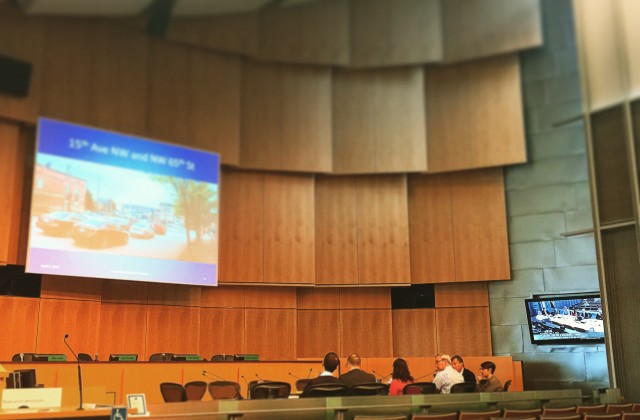Watching Pedestrian Designation Proposal
The Seattle City Council is considering expanding the number of areas that designated P or Pedestrian. Pedestrian zones are areas that have a lot of retail use concentrated in a way that allows more walking and less driving. In a way, designating more of these zones is both trying to preserve walkability and promote it. The Central Staff memo on the proposal describes P Designations this way:
The primary effect of the P designation is to require a set of retail and other lively pedestrian-oriented uses at street level along Principal Pedestrian Streets and to limit driveways along those streets. Drive-in businesses and surface parking lots are prohibited in areas with P designations. In addition, development in areas with P designations when also located in urban villages must exceed a minimum floor area ratio (FAR) limit.
The proposal, an outgrowth of regulatory reform legislation passed a few years ago, would create 37 new pedestrian designations. This isn’t bad for housing and new growth and in many ways this effort is in the best intention category. It can mean more requirements for redeveloping an existing site.
I testified this way at yesterday’s hearing on the proposal:
I was a member of the Regulatory Reform Task Force that first met four years ago in a very public and exhaustive process to identify opportunities to open up our city for more growth, especially mixing uses together in our densest neighborhoods.
We recognize this proposal is a series of trade-offs that try to accomplish this by improving the flexibility of use in dense neighborhoods. Flexibility is the key concept here and is the one we see as allowing, over time, uses to develop to meet demand for residential and commercial space.
What we are concerned about is the phrase, on page 3 of the Central Staff memo, that suggests, “restrict[ing] the ability to waive some of these regulations through design review.”
In the past the purpose of increasing the prescriptive nature of the code in some places was intended, sometimes, to create both certainty and an incentive to participate in Design Review. While many of us have issues with how Design Review is working (or not working is often the case), we wonder why the door is being closed on that process being part of the flexibility.
We suggest not having a “no departure” element to this since it tends to undermine the certainty and flexibility we sought when the Regulatory Reform Process began.
We’ll be keeping an eye on how this proposal unfolds and especially how it impacts potential new housing and retail developments in areas with the Pedestrian Designation. I’m not a big fan of design review as it is currently, but it makes more sense to allow that as an option if it makes sense that making even more unbending rules that could add costs to housing in great neighborhoods. You can see a map of the various districts here in the full Central Staff Presentation.


